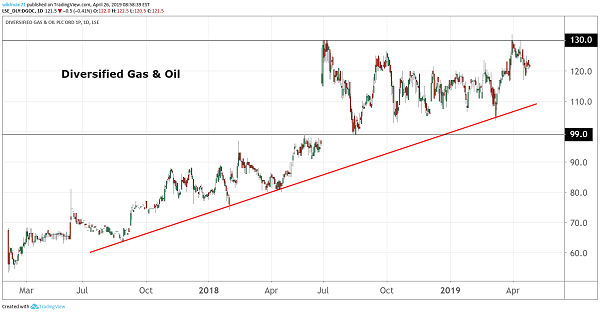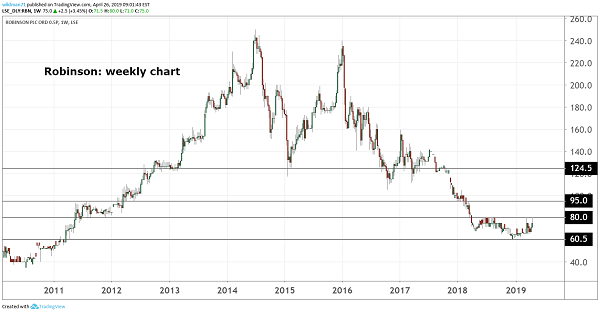Five AIM shares paying big dividends with growth potential
Our former AIM writer of the year names the five high-yielding small-caps he would buy. One yields 7.6%!
26th April 2019 15:22
by Andrew Hore from interactive investor
Our former AIM writer of the year names the five high-yielding small-caps he would buy. One yields 7.6%!

AIM offers investors many attractive dividend paying companies as potential investments. But high dividend yields are not always a good thing as they can be due to the deterioration of trading and the dividend may not be covered in the future even if it is still paid. This means that investors have to be choosy.
Sadly, one of the most attractive dividend payers is being lost. Manx Telecom (LSE:MANX) has agreed a 207.1p a share bid from Basalt Infrastructure Partners and investors will also receive the 7.9p a share final dividend. The total bid of 215p a share values the company at £256 million.
That bid does not appear particularly generous and it takes away from investors a potential yield of more than 5%.
It pays to be cautious about some of the yields that come up when searching AIM companies. WYG (LSE:WYG) is still included in some searches of high yielders, but the professional services company cancelled the interim dividend of 0.6p a share it had previously announced.
Here are some AIM companies with high yields. Not all of them have unblemished track records, but they do represent a good income investment with potential upside for the share price. They also offer diversification between sectors.
Diversified Gas & Oil (DGOC)
122p
Forecast Yield: 7.1%
US-focused oil and gas producer Diversified Gas & Oil (LSE:DGOC) has been highly acquisitive since joining AIM, and those acquisitions have consistently enhanced earnings, thereby enabling higher dividends to be paid. The company's policy is to pay 40% of excess cash flow in dividends.
Diversified invests in oil and gas assets in the Appalachia region of the US. This is a proven oil area where additional wells can be drilled to increase production. There is no speculative exploration, so there is no sharp upside potential, but the risk is much lower.

Source: TradingView Past performance is not a guide to future performance
There have been five fundraisings since the company joined AIM when it raised £39.7 million at 65p a share. These cash calls have been to finance the acquisition of additional oil and gas assets and have been at consistently rising share prices. The latest raised £176.8 million at 117p a share in order to help finance the $400 million acquisition of HG Energy II Appalachia. This is immediately cash flow per share enhancing.
Pro forma net production is more than 90,000 barrels of oil equivalent per day. That is more than some better known fully listed oil companies, such as Premier Oil (LSE:PMO).
The total dividend for 2018 was 11.23 cents a share. This is forecast to rise by 37% to 15.4 cents a share.
Belvoir Lettings (BLV)
114p
Forecast Yield: 6.3%
Regulatory changes in the property lettings sector have hampered the share price of Belvoir Lettings (LSE:BLV) in the past couple of years. Charging tenant fees will be banned from 1 June and the market should settle down again after that.
The acquisition of a mortgage broking business has provided growth that helps to offset the loss of tenant fees income. The expected effect on Belvoir of the ban on tenant fees is likely to be less than 6% of gross profit.
Pre-tax profit was £5.5 million in 2018. After a few years of unchanged dividends, management edged up the total dividend from 6.9p a share to 7.2p a share. A profit of £5.7 million is expected this year and then £6.5 million in 2020. A 7.4p a share dividend, covered 1.6 times by earnings, is forecast for 2019.
The share price already reflects the concerns about the banning of tenant fees. This provides an opportunity to acquire shares that provide an attractive yield, as well as potential share price upside as the market settles down. Private rental is a growing market and Belvoir has a strong market position.
Greencoat Renewables (GRP)
€1.095
Forecast Yield: 5.5%
Greencoat Renewables (LSE:GRP) is an investment company focused on the Irish wind generation market and managed by Greencoat Capital. Longer-term, Greencoat may consider investments in wind and solar assets in other EU countries. The shares are also traded in Dublin on what is now known as the Euronext Growth Market.
Greencoat floated in July 2017, when it raised €270 million at €1 a share. The Ireland Strategic Investment Fund was a cornerstone investor. In 2018, an additional €111 million was raised at €1.01 a share, and, last month, a further €147.7 million was raised at €1.055 a share. Each time, these placings were oversubscribed.
The cash is being invested on operating wind farms in Ireland, which has a target of generating 16% of energy from renewable sources in 2020 – mainly from wind farms. The current government scheme means that wind farms get a 15-year inflation-linked floor price for their energy under the current regime. This provides consistent income for the company and enables it to pay an attractive dividend.
There is a new, replacement scheme to support renewables that is coming into force in Ireland from 2020. The RESS scheme is expected to support a wider range of renewable technologies, but wind farms will remain an attractive investment.
Greencoat's latest acquisition is an additional 25% stake in the Cloosh Valley wind farm, which has a capacity of 108 megawatt (MW), from SSE (LSE:SSE), taking its stake to 75%. The total net generating capacity owned by Greencoat is 411MW.
The annual dividend target on flotation was €0.06 a share. This was achieved in the first full year of operation and it was covered 1.3 times by earnings. The dividend should increase steadily and €0.0603 a share is promised for this year.
Robinson (RBN)
72.5p
Forecast Yield: 7.6%
Packaging firm Robinson (LSE:RBN) has a poor recent record in terms of profit, but it has kept its dividend steady at 5.5p a share.
Robinson has facilities in the UK and Poland. Martin McGee has taken charge as interim chief executive and he is focused on improving efficiency of the operations. Part of this is investing in new plant and equipment.
High capital spending means that debt is set to increase over the next couple of years. Net debt is expected to be £10 million at the end of 2019. There are spare bank facilities and net assets were £22.9 million at the end of 2018, which is higher than the market capitalisation. There are surplus property assets that could provide an uplift in the longer-term - £5 million-£10 million is suggested by finnCap.
Pre-tax profit slumped from £2.2 million to £1.2 million in 2017 and last year it started to recover and reached £1.4 million. A pre-tax profit of £1.8 million is forecast for this year, which puts the shares on eight times 2019 earnings.

Source: TradingView Past performance is not a guide to future performance
The negative is that the dividend is expected to continue to be maintained rather than increased. This will help to rebuild the dividend cover to 1.8 times in 2020.
There is still much to be proved by Robinson. Even so, the recovery in the profitability of Robinson is not fully reflected in its share price.
Marshall Motor Holdings (MMH)
164p
Forecast Yield: 5.2%
New car sales have fallen in the past couple of years and the controversy about diesel cars has not helped what would have been a weaker market any way. The car market has always been cyclical and the car dealers with a strong balance sheet, as is the case with Marshall Motor Holdings (LSE:MMH), will be able to cope with the downturns. There could also be opportunities for acquisitions.
There is continued uncertainty about the new car market, but the used car market is stronger than that for new cars and aftersales provides a steady income stream.
Like Robinson, the short-term outlook is for a maintained dividend of 8.54p a share, although there is a possibility of small increases further out.
A maintained dividend would still be covered nearly three times. Importantly, cash generation is strong enough to cover significant capital expenditure. Net debt is expected to increase from £5.1 million to £9.8 million this year – based on forecast capex of £24.5 million. A reduction in expected capital investment in 2020, although it will still be around £16 million, means that net debt could fall below £ 4million at the end of 2020.
The benefits of the capital investment in new showrooms should show through in additional profitability over the next few years. The shares are trading at a discount to net asset value (NAV) of around one-third.
Andrew Hore is a freelance contributor and not a direct employee of interactive investor.
These articles are provided for information purposes only. Occasionally, an opinion about whether to buy or sell a specific investment may be provided by third parties. The content is not intended to be a personal recommendation to buy or sell any financial instrument or product, or to adopt any investment strategy as it is not provided based on an assessment of your investing knowledge and experience, your financial situation or your investment objectives. The value of your investments, and the income derived from them, may go down as well as up. You may not get back all the money that you invest. The investments referred to in this article may not be suitable for all investors, and if in doubt, an investor should seek advice from a qualified investment adviser.
Full performance can be found on the company or index summary page on the interactive investor website. Simply click on the company's or index name highlighted in the article.
Disclosure
We use a combination of fundamental and technical analysis in forming our view as to the valuation and prospects of an investment. Where relevant we have set out those particular matters we think are important in the above article, but further detail can be found here.
Please note that our article on this investment should not be considered to be a regular publication.
Details of all recommendations issued by ii during the previous 12-month period can be found here.
ii adheres to a strict code of conduct. Contributors may hold shares or have other interests in companies included in these portfolios, which could create a conflict of interests. Contributors intending to write about any financial instruments in which they have an interest are required to disclose such interest to ii and in the article itself. ii will at all times consider whether such interest impairs the objectivity of the recommendation.
In addition, individuals involved in the production of investment articles are subject to a personal account dealing restriction, which prevents them from placing a transaction in the specified instrument(s) for a period before and for five working days after such publication. This is to avoid personal interests conflicting with the interests of the recipients of those investment articles.